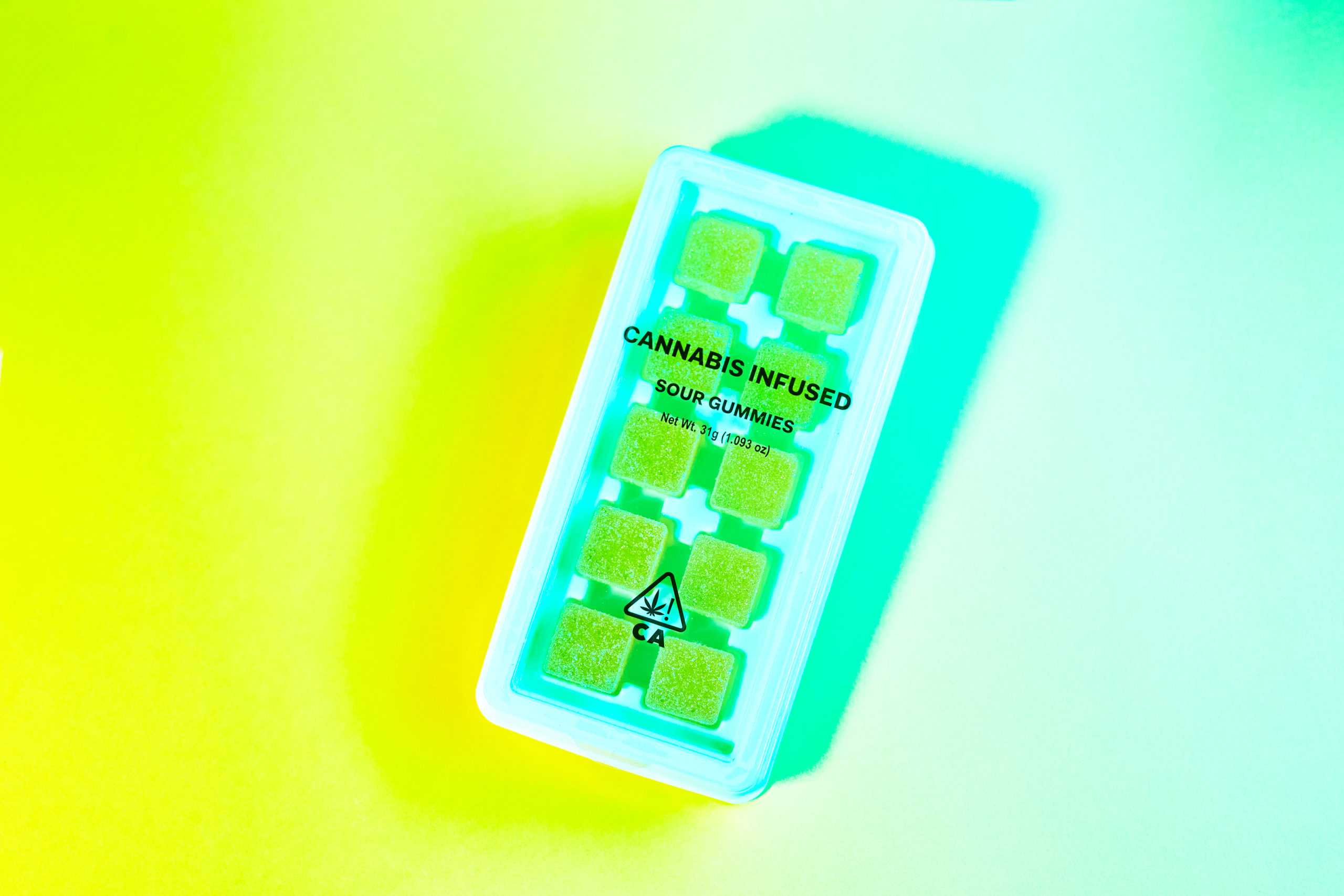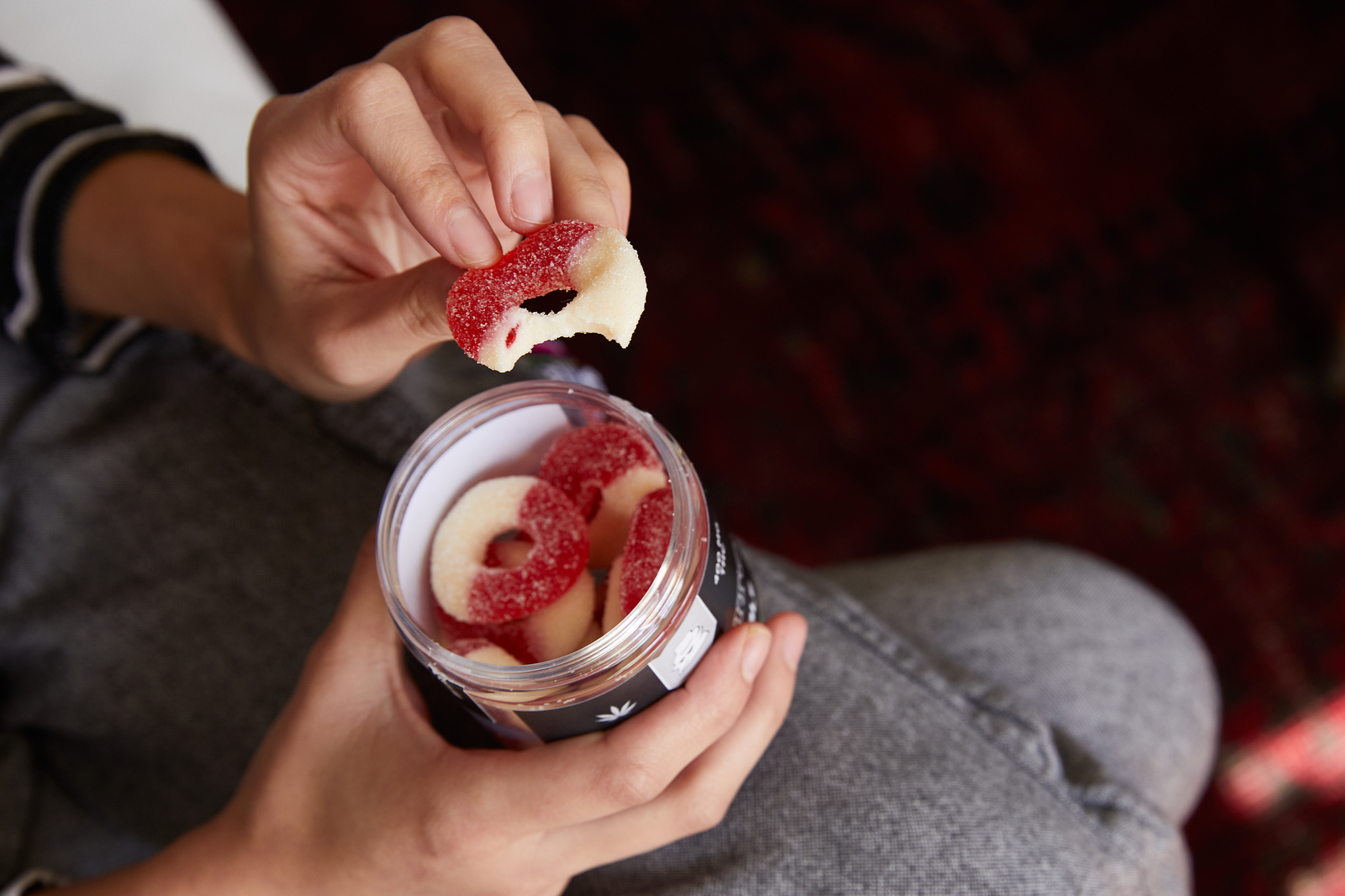Today, almost any food or drink can be infused with cannabis, and edibles make for a creative, sometimes potent, and tasty way of enjoying the plant. And since edibles are digested, they are known to produce harder-hitting and longer-lasting effects compared to other methods of delivery and dosing. But how long do edible effects truly last?
Edibles are a smokeless and convenient way to consume cannabinoids, so it's no surprise they've become increasingly popular over recent years. Below, learn more about the effects of edibles and what factors contribute to the duration and strength of an edible high.
Find edibles near you on the Weedmaps app
What are cannabis edibles?
Cannabis edibles are foods and beverages infused with cannabis, ranging from the classic pot brownie — or "happy brownie" — to medicated gummies, chocolate, tea, coffee, cooking oils, mints, soda, syrup, and so much more.
Edibles are an excellent method of cannabis consumption for those who prefer a highly potent, long-lasting, smokeless, and flavorful method of dosing.
The difference between taking an edible and smoking or vaping
Compared to inhalation methods like smoking and vaping, an edible high generally has a slower onset, lasts significantly longer, and could potentially feel more intense and euphoric. The delayed onset happens because your stomach, intestines, and liver need time to break down and metabolize the food before the cannabinoids can make their way into your bloodstream.
When THC finally makes its way through your digestive system, it's converted into a different molecular form called 11-hydroxy-THC. This form of THC more readily crosses the blood-brain barrier, and people report that edibles produce more potent effects than other consumption methods.
The presence of fat can also increase the bioavailability of cannabinoids, offering another reason why an edible containing fat may produce a stronger and more intense experience compared to smoking or vaping. And while the effects of smoking or vaping typically dissipate within 1 - 4 hours, the effects of edibles can last upwards of three times as long.
How long do edible effects take to kick in?
 Photo by: Gina Coleman/Weedmaps
Photo by: Gina Coleman/WeedmapsImage lightbox

Depending on the potency of the product and how much of it you consume — as well as your size, individual metabolism, and what you've eaten that day — the onset of effects can kick in anywhere from 30 minutes to two hours after ingestion. These factors will also impact how long edibles last. And according to some research, consuming an edible on an empty stomach can produce a quicker onset.
The kind of edible you consume also plays a role in how quickly you will feel its effects. For instance, the onset of ingesting a cannabis-infused beverage is generally speedier than food — as little as 10 - 15 minutes — since our bodies generally digest liquids more quickly than solids.
The same goes for edibles that slowly dissolve in the mouth, like hard candies, mints, and lollipops. These generally take effect anywhere from 15 to 45 minutes since most of the absorption of cannabinoids happens through tissue in the mouth and tongue, bypassing the liver in a more direct route to the bloodstream.
How long do edible effects last?
Keep in mind that everybody responds to edibles differently, and the higher the dose, the stronger the effects and the longer they will last. The duration of your edible high can last anywhere from a few hours to the better part of a day, with THC levels observed to peak in the bloodstream on average around 2 - 3 hours after ingestion.
Some feel the effects of edibles start to dissipate within 2 - 4 hours, while others report feeling high for much longer, up to 12 - 24 hours after ingestion. On average, most edible consumers experience effects anywhere from 4 - 8 hours.
Edible dosage: how much should I take?
When it comes to dosing cannabis edibles, it's always best to start low and go slow so as to avoid any unpleasant side effects from overconsumption.
With a delayed onset time, many novice edible consumers become impatient waiting for the effects to kick in and have consumed more too early. This can be a recipe for a bad time, so always give your body at least an hour or two before trying a little bit more.
If you're new to cannabis edibles, this advice is especially important since everyone responds to edibles differently. In fact, according to a 2016 Twitter analysis, one of the most commonly reported adverse effects of edibles is their unpredictability.
A cannabis edible is measured in milligrams (mg) of its active cannabinoid, like THC. An edible can contain anywhere from 0.5 milligrams THC to hundreds of milligrams THC. Beware: high-dose edibles can be very potent and are approached with caution even by the most seasoned cannabis lovers and medical patients.
Common edible dosages: what should I expect?
Many edibles are dosed for the average consumer, and you'll often see a serving containing 5 - 10 milligrams of THC (or even less).
- For the beginner consumer: A 5-milligram edible is considered a beginner's dose, but if you've never tried edibles before, then a 2.5-milligram THC dose may be a better starting point. Some people report feeling effects from doses as little as 0.5 milligrams of THC. Lower-dose edibles are likely to produce mild psychoactive effects and are recommended for beginners, microdosers, occasional consumers, and those with a lower tolerance for weed. For some, a 5 milligram THC edible can initiate couch-lock for hours, while for an individual with a high tolerance or fast metabolism, its effects might not last as long or even be felt at all.
- For the moderate consumer: A 10 or 15-milligram edible is considered a moderate dose and can produce strong, euphoric, mind-altering effects and impaired perception. Ten-milligram edibles are generally recommended for those who have used edibles before and understand how edibles impact them. Effects of a 10 milligram edible will likely have a quicker onset time than a 5 milligram edible, and effects will typically last longer, too.
- For the high tolerance consumer: Doses in the 25 - 50 milligram range can be quite potent for some, especially those who don't consume cannabis regularly. In one study that examined healthy adults who didn't frequently consume cannabis, dosages in the 25+ milligram range were associated with more side effects like nausea and vomiting. Dosages of upwards of 100 milligrams THC are considered highly potent and are more likely to cause negative side effects. Generally speaking, this high-level dose should be left to experienced edible consumers and patients who have a high tolerance or are treating severe symptoms.
Starting with a low dose and working your way up is a safe and effective way to approach dosing with edibles. The worst-case scenario with a lower dose is that you don't feel its effects. However, the worst-case scenario with a dose that's too high can mean an uncomfortable lack of mental clarity, paranoia, nausea, and other side effects.
Bottom line
When it comes to cannabis edibles, always remember to start low and go slow. Since the effects of edibles can last several hours, be sure to give yourself more than enough time to enjoy the ride. Keep in mind that everybody is different, and a dosage that works for you might not be what works for somebody else. Explore the plethora of edible options out there, be sure to consume mindfully, and enjoy the ride.



